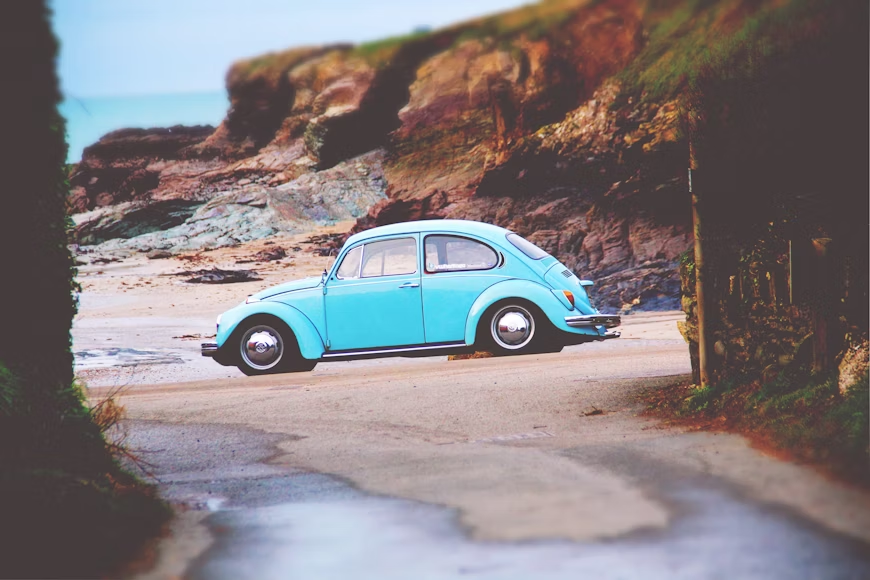Is there anything better than driving along the coastline with the windows down and salty breeze running through your hair as the best songs play on the radio? Experiencing the rhythmic crash of the waves or stopping for antiquing on an upcoming coastal trip sounds fantastic, and a specialty used car is the perfect solution.
Before loading up the sand toys and beach chairs, make sure the antique, collector, or vintage used car being selected doesn’t come with any hidden surprises. The last thing anyone wants is to get stuck on the highway because of a poorly maintained engine, an undisclosed accident report, or no roadside assistance. Here is a quick guide to know what to look for before exchanging keys and why arranging auto transport might be the way to go.
Inspecting the Car: What Dealers May Not Disclose
In most cases, a used car dealership will not hide any information about the vehicles they’re selling. If they are known for selling a “lemon,” no one will purchase from them in the future.
The other good news is that the FTC has a “Used Car Rule.” It means the dealer must display a Buyer’s Guide in the window outlining the complete vehicle disclosure, or if the car is sold “as is.” Usually, but not always, that should include a full vehicle history of accidents, repairs, and safety recalls.
Even with those protections, some used car dealers may not have all the data in the quote or estimate price. For one, they might not disclose any safety recalls. The NHTSA (National Highway Traffic Safety Administration) reports that over 50 million vehicles on the road have unresolved safety issues.
Just be sure the dealer discloses any prior accidents with a full vehicle history report and provides details on any branded titles like “salvage,” “rebuilt,” or “flood damaged.” A CPO (Certified Pre-Owned) used car may be a better choice as it undergoes an inspection before being sold.
Finally, always bring a friend who knows cars. Take the used vehicle for a test drive. If you are buying online and arranging for transport carriers before your trip, hire a local mechanic to inspect and drive the car on your behalf.
Auto Transport Considerations for Your Upcoming Coastal Adventure
More than 95% of used-car searches begin with an online platform. Not all buyers will go through with the buy “site unseen,” but you might be different. The appeal of a perfectly maintained Jeep Wrangler or Land Rover Defender is enough to consider domestic auto transport.
When searching for quality auto transport carriers who can arrange pickup and delivery from the dealer to your coastal trip, be sure to research properly. You can use door-to-door or terminal-to-terminal service with either open or enclosed car transport. Enclosed will keep the vehicle safer, but open delivery tends to be slightly less expensive with more flexible delivery timeframes.
Summer demand raises rates, especially in popular tourist areas, so plan the shipping situation as early as possible. There could be discounts if the car has shipping insurance in place or the delivery date is more flexible.
Before the used car is shipped, make sure it is prepared appropriately. That includes:
- Clearing the vehicle of any personal items from previous owners.
- Making sure it is cleaned and all the fluids are topped off.
- The battery, tires, and any aftermarket accessories should be checked.
- The tank should only have a quarter of its fuel capacity.
- All documentation is prepared and provided (bill of sale, insurance, title, registration, shipping contract, etc.)
The best car shipping services will provide a phone number or real-time tracking and notification system so you know where your car is as you approach coastal trip dates.
Budgeting for Surprises After Your Purchase
Saving up for a wonderful coastal trip from Florida to New York or up the PCH in California needs to include a “buffer” for your used car. Kelley Blue Book lists the average cost for all types of repairs to all makes and models at $838. The hope is you’ll never need that fund and can use it for adventures, dining, or unique experiences on the trip, but having it is always better than not having it.
One of the issues that might crop up is whether the dealer used aftermarket or non-OEM parts for any safety recalls and repairs. That could mean a failing brake pad, an air conditioner not blowing cold air, or a seized engine from the wrong type of oil. Keeping that “buffer” provides peace of mind while enjoying ocean views and fresh seafood on the trip.
In addition to repairs, a used car will come with registration fees, sales and excise taxes (especially for interstate car shipping), any emissions test, fuel for the trip, and, whether or not you want to get a sunshade during your coastal trip.
Packing & Preparation for the Coastline Road
Coastal road trips are unique compared to the typical journey. Shifting weather and frequent stops with sand involved mean the packing list is different. Start with the basics like a paper map backup, emergency kit, jumper cables, flashlight, phone charger, snacks, reusable water bottles, toll cash, wet wipes, and trash bags.
For specific travel around the coast, all passengers need to up the ante a little with particular tools and gear like:
- Removable floor liners for dirt, mud, and sand
- Handheld vacuum to get pesky sand out
- Compact brush or collapsible foot rinse bucket after the beach
- Soft-sided cooler
- Sunscreen, sunglasses, sunshade, and big hats
- Breathable, but multi-layered clothing
- Noise-canceling headphones or a portable speaker
- A “beach kit” with everything needed for relaxing on the coast
- Plenty of extra shopping bags to store antiques, keepsakes, and souvenirs
It may also help to get a protective wax coating treatment on the used car. That will help reduce the impact of salty air or heavy rainstorms on the vehicle. One professional trick families should use is a mesh bag for sand toys that allows sand to escape before getting in the car, and a “wet” bag for storing shells, rocks, and other items that might still be wet from the water and tide pools.
Lessons Learned from Coastline Road Trip Travelers
Experienced coastal travelers understand that preparation is the key to enjoying roads where the water meets land. Be sure the used car has had a recent maintenance check (tires, brakes, oil, lube, etc.) and everyone is up to date on route conditions. There are plenty of coastal routes with sharp turns or steep drop-offs, so pack some motion sickness medication.
Another thing often overlooked that locals understand is scenic coastal routes are slower than highways and have fewer rest stops. Plan potty breaks into the journey and keep water and snacks on hand for longer treks. That includes strategically looking at fuel stops as well.
As you explore the coastal route, be kind. These picturesque towns need tourism, but aren’t exactly happy to be overwhelmed by visitors. A little kindness and respect for land and wildlife go a long way with local patrons, homeowners, and police.
Ship Your Car Before the Coastal Trip
Finding the perfect used car for any upcoming coastal trip is like coming across a diamond in the rough. Follow the tips above to ensure you’re getting the best used car possible and that there are no hidden mechanical or financial issues, and you should have a wonderful trip.
When considering reliable car transport, choose a team backed by a vast network of professional drivers and strong customer reviews. That will ensure a seamless result, making it easier to coordinate delivery so you can focus on what matters most: fresh seafood, salty air, and relaxing waves.

